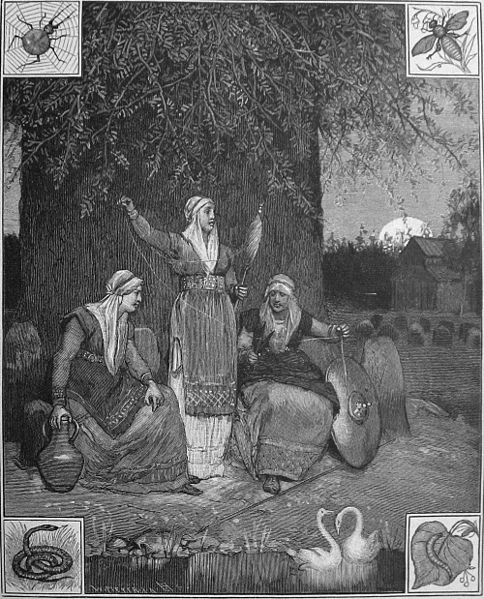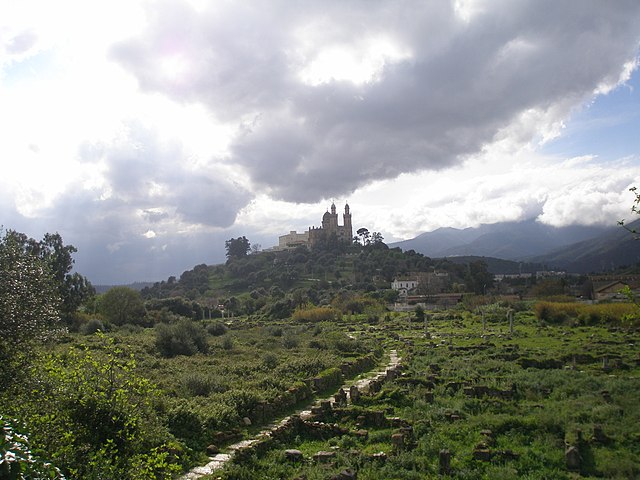In Germanic paganism, a seeress is a woman said to have the ability to foretell future events and perform sorcery. They are also referred to with many other names meaning "prophetess", "staff bearer", "wise woman" and "sorceress", and they are frequently called witches or priestesses both in early sources and in modern scholarship. In Norse mythology the seeress is usually referred to as völva or vala.
Sculpture of the Germanic seeress Veleda, by Hippolyte Maindron, 1844, in Jardin du Luxembourg, Paris.
The fate of men was always in the hands of female powers. An illustration of the Norns who spin the threads of fate at the foot of Yggdrasil, the tree of the world. Beneath them is the well Urðarbrunnr with the two swans that have engendered all the swans in the world.
The seeress Veleda as painted by Jules Eugène Lenepveu, 1883
It appears to have been Ganna herself, and her king Masyos, who informed Tacitus of the Semnoni religious practices. An illustration of the Semnoni sacred grove, which is identified with the Grove of Fetters in Scandinavian heroic legend.
Albruna, Aurinia or Albrinia are some of the forms of the name of a probable Germanic seeress who would have lived in the late 1st century BC or in the early 1st century AD. She was mentioned by Tacitus in Germania, after the seeress Veleda, and he implied that the two were venerated because of true divine inspiration by the Germanic peoples, in contrast to Roman women who were fabricated into goddesses. It has also been suggested that she was the frightening giant woman who addressed the Roman general Drusus in his own language and made him turn back at the Elbe, only to die shortly after, but this may also be an invention to explain why a consul of Rome would have turned back. In addition, there is so little evidence for her that not every scholar agrees that she was a seeress, or that she should be included in a discussion on them. She may also have been a minor goddess, a matron.

The attestation in the Aesinas codex, considered closest to that of the lost medieval Hersfeld manuscript.
Statue of Tacitus, in Vienna
The Codex Aesinas, the only direct copy of the Hersfeld manuscript.
Hippo Regius








